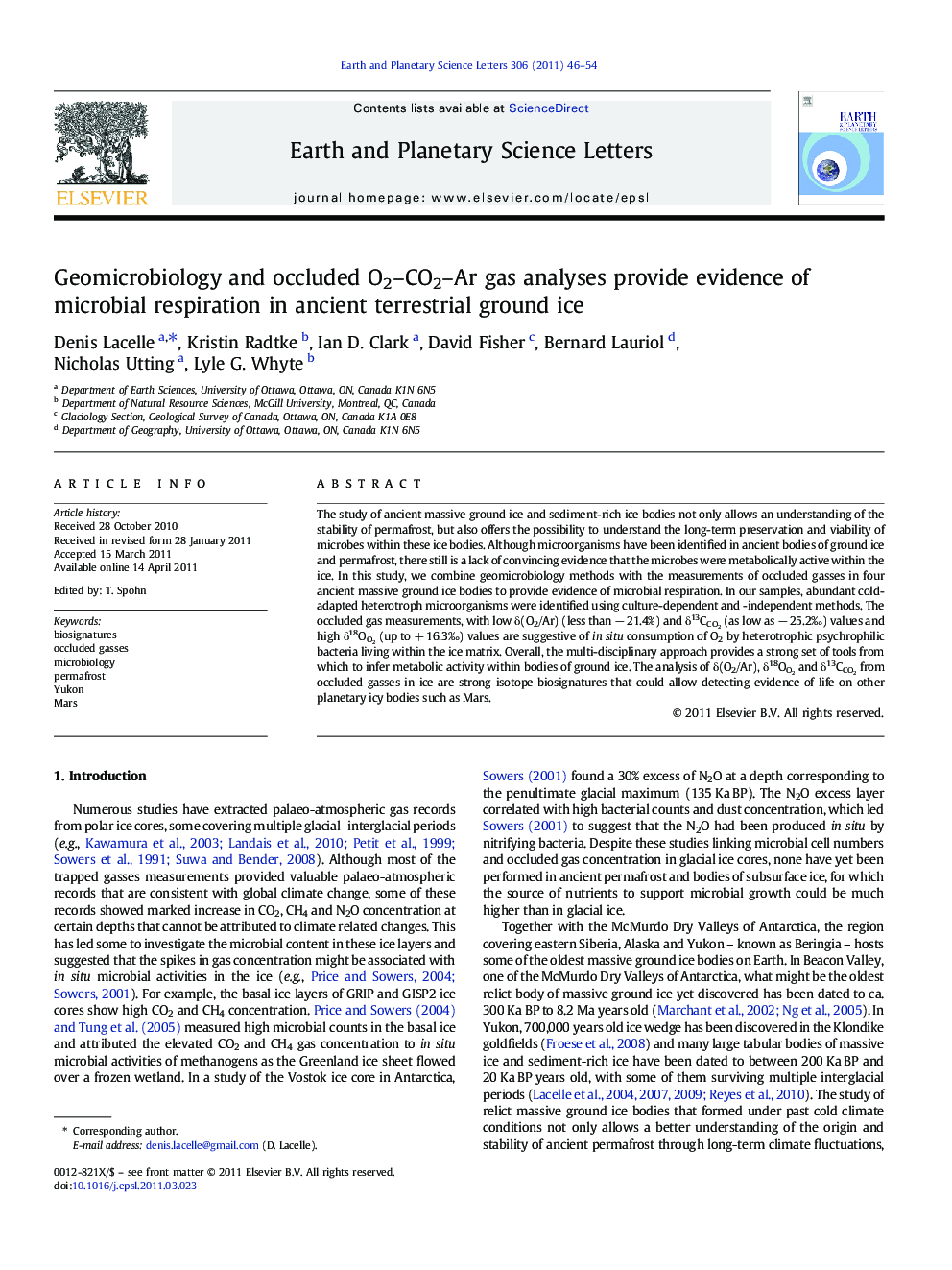| کد مقاله | کد نشریه | سال انتشار | مقاله انگلیسی | نسخه تمام متن |
|---|---|---|---|---|
| 4678062 | 1634828 | 2011 | 9 صفحه PDF | دانلود رایگان |

The study of ancient massive ground ice and sediment-rich ice bodies not only allows an understanding of the stability of permafrost, but also offers the possibility to understand the long-term preservation and viability of microbes within these ice bodies. Although microorganisms have been identified in ancient bodies of ground ice and permafrost, there still is a lack of convincing evidence that the microbes were metabolically active within the ice. In this study, we combine geomicrobiology methods with the measurements of occluded gasses in four ancient massive ground ice bodies to provide evidence of microbial respiration. In our samples, abundant cold-adapted heterotroph microorganisms were identified using culture-dependent and -independent methods. The occluded gas measurements, with low δ(O2/Ar) (less than − 21.4%) and δ13CCO2 (as low as − 25.2‰) values and high δ18OO2 (up to + 16.3‰) values are suggestive of in situ consumption of O2 by heterotrophic psychrophilic bacteria living within the ice matrix. Overall, the multi-disciplinary approach provides a strong set of tools from which to infer metabolic activity within bodies of ground ice. The analysis of δ(O2/Ar), δ18OO2 and δ13CCO2 from occluded gasses in ice are strong isotope biosignatures that could allow detecting evidence of life on other planetary icy bodies such as Mars.
Research highlights
► Analysis of occluded gasses (O2, N2, CO2, Ar, Xe, and Kr) combined with geomicrobiology provide evidence of microbial respiration in ancient terrestrial ground ice bodies.
► Cold-adapted heterotroph microorganisms were identified using culture-dependent and -independent methods and occluded gas measurements, with low δ(O2/Ar) (less than−21.4%) and δ13CCO2 (as low as−25.2‰) values and high δ18OO2 (up to +16.3‰) values are suggestive of in situ consumption of O2 by heterotrophic psychrophilic bacteria living within the ice matrix.
► The multi-disciplinary approach combining geomicrobiology and occluded gasses analysis could be used to detect evidence of ancient life on other cold planetary icy bodies.
Journal: Earth and Planetary Science Letters - Volume 306, Issues 1–2, 1 June 2011, Pages 46–54